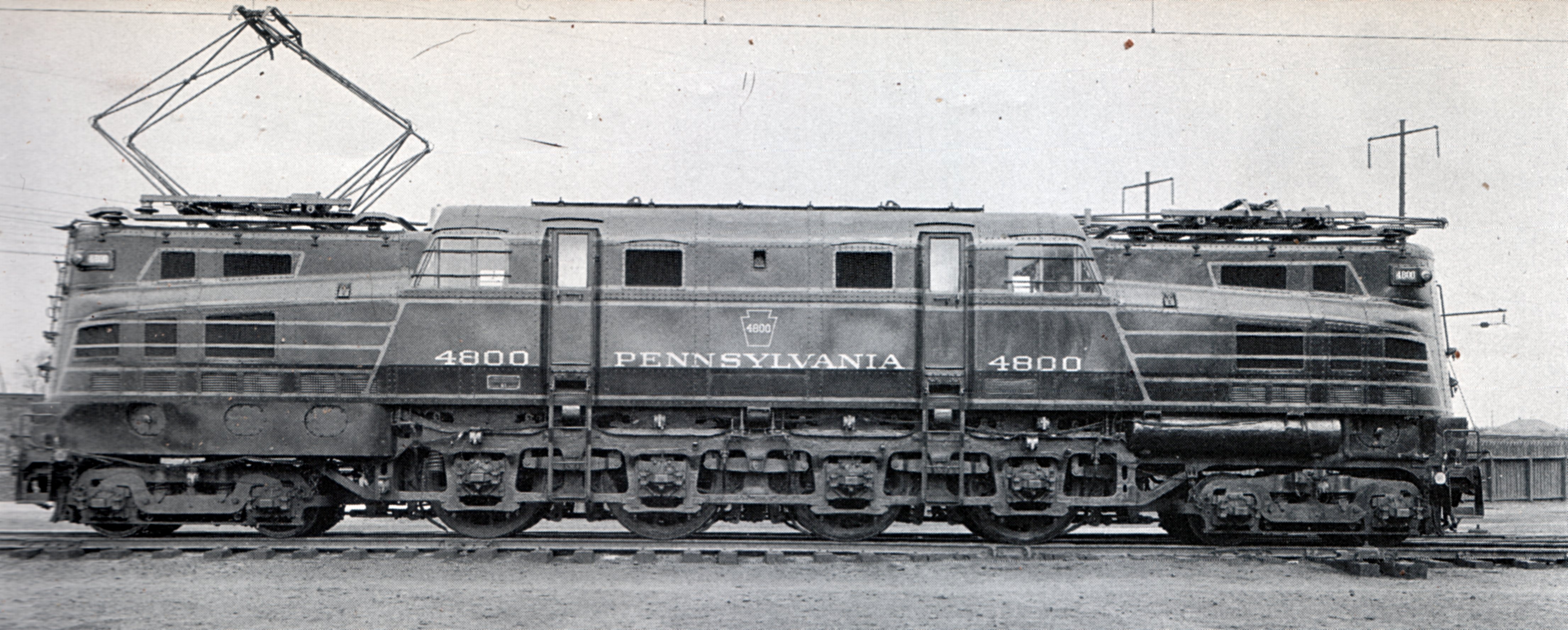- PRR R1
Infobox Locomotive Auto
name = PRR R1
imagesize = 300px
caption = R1 #4800 in its builders' portrait
powertype = Electric
whytetype = 4-8-4
uicclass = 2'C2'
aarwheels = 2-C-2
builder = Baldwin
builderother =Westinghouse
builddate = 1934
totalproduction = 1
leadingsize = convert|36|in|abbr=oncite web
url = http://prr.railfan.net/diagrams/PRRdiagrams.html?diag=r1.gif&sel=ele&sz=sm&fr=
title = PRR R1 Diagram
author = Pennsylvania Railroad
work = PRR.Railfan.net
accessdate = 2008-08-27]
driversize = convert|62|in|abbr=on
wheelbase = convert|54|ft|abbr=on
length = convert|64|ft|8|in|abbr=on
width = convert|10|ft|6.19|in|abbr=on
height = convert|15|ft|abbr=on over locked-down pantographs
axleload = convert|57500|lb|abbr=on
weightondrivers = convert|230000|lb|abbr=on
weight = convert|402000|lb|abbr=on
electricsystem = 11 kV AC @ 25 Hz
collectionmethod = pant
tractionmotors = Westinghouse, convert|625|hp|abbr=on
fuelc
convert|487|usgal|abbr=on (for train heat boiler)
waterc
convert|2041|usgal|abbr=on (for train heat boiler)
topspeed = convert|100|mph|abbr=on
poweroutput = convert|5000|hp|abbr=onThe
Pennsylvania Railroad 's class R1 comprised a single prototypeelectric locomotive constructed in 1934 by theBaldwin Locomotive Works ofPhiladelphia, Pennsylvania , USA, with the electrical equipment byWestinghouse .cite book
last = Staufer
first = Alvin F.
title = Pennsy Power
year = 1962
publisher = Staufer
id = LOC 62-20878]It was built as a competitor to the GG1 design, but after trials the GG1 was selected for volume production on the basis of its superior tracking and riding qualities; the R1 prototype, however, remained in service. It was numbered 4800 originally, swapped numbers with the victorious GG1 prototype to #4899, but was moved in May 1940 to #4999 to make room for the expanding GG1 fleet.cite web
url = http://www.steamlocomotive.com/GG1/r-1.shtml
title = The Pennsylvania Railroad GG1: The R1
work = SteamLocomotive.com
first = Wes
last = Barris
accessdate = 2008-08-27]For many years, the R1's regular duties involved hauling the westbound
Broadway Limited and returning eastward with a mail and express train. The long rigid wheelbase of the locomotive caused occasional derailments inSunnyside Yard and elsewhere. The R1 was withdrawn from service and sent for scrap in 1958.The R1 design had four driven axles in a rigid
locomotive frame , like a steam locomotive. Each was driven by two convert|625|hp|adj=ontraction motor s driving the wheels through aquill drive and sprung cups. Each end of the double-ended locomotive has a four-wheel truck to guide the locomotive at speed, giving the R1 a4-8-4 wheel arrangement in theWhyte notation (AAR: 2-D-2; UIC: 2'Do'2). In many respects the design resembled the earlier, lighter P5, but with an extra driving axle and lower axle loads.References
Wikimedia Foundation. 2010.
